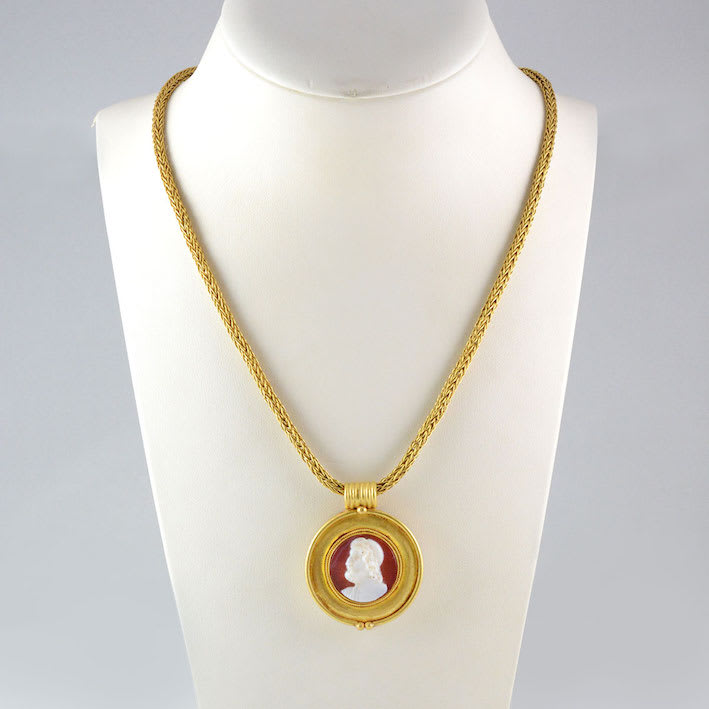Classical Revival Gold Necklace, 18th Century CE - 19th Century CE
Further images
This Classical Revival cameo has been mounted in a 22 karat gold pendant dating from the 1920's-30's with a 22 karat gold necklace dating from the same era. Cameos are...
This Classical Revival cameo has been mounted in a 22 karat gold pendant dating from the 1920's-30's with a 22 karat gold necklace dating from the same era.
Cameos are hard or precious stone carved in relief. The cameo is usually a gem (commonly agate, onyx, or sardonyx) having two different colored layers, with the figures carved in one layer so that they are raised on a background of the other. The cameo is the converse of the intaglio, which consists of an incised, or sunken, engraving in the same class of materials.
Cameos exist in large numbers from the early Sumerian period (c. 3100 BC) to the decline of Roman civilization, from the Renaissance to the Neoclassical period in the 18th century. While Greek cameos were purely decorative (as opposed to intaglios, which were used as seals), Roman cameos were usually carved with portraits and mythological scenes. Because of increased interest in classical civilization, the art of cameo engraving was again perfected during the time of the Renaissance. Cameos were again used to commemorate personages, as in ancient days. In the 18th and 19th centuries, cameos adorned such jewelry as diadems, belts, brooches, and bracelets.
Cameos are hard or precious stone carved in relief. The cameo is usually a gem (commonly agate, onyx, or sardonyx) having two different colored layers, with the figures carved in one layer so that they are raised on a background of the other. The cameo is the converse of the intaglio, which consists of an incised, or sunken, engraving in the same class of materials.
Cameos exist in large numbers from the early Sumerian period (c. 3100 BC) to the decline of Roman civilization, from the Renaissance to the Neoclassical period in the 18th century. While Greek cameos were purely decorative (as opposed to intaglios, which were used as seals), Roman cameos were usually carved with portraits and mythological scenes. Because of increased interest in classical civilization, the art of cameo engraving was again perfected during the time of the Renaissance. Cameos were again used to commemorate personages, as in ancient days. In the 18th and 19th centuries, cameos adorned such jewelry as diadems, belts, brooches, and bracelets.





